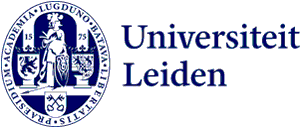
How did Proto-Indo-European reach Asia?
Five thousand years before the common era (BCE), Proto-Indo-European, the mother of many languages that are spoken today in Europe, Central Asia and South Asia, originated in eastern Europe. PhD candidate Axel Palmér has combined a 175-year-old hypothesis with new techniques to demonstrate how descendants of this proto-language ended up in Asia.
Indo-Iranian gave rise to languages such as Hindi and Persian. For a long time, linguists have assumed that these languages descended from the same Proto-Indo-European as most European languages. But the question was: how did they end up on another continent?
Large loop
‘Proto-Indo-European was probably spoken five thousand years ago between the Caspian Sea and the Black Sea, north of the Caucasus,’ says Palmér, pointing to the blue area on the map. ‘We know it was subsequently also spoken in the area around the Ural Mountains, shown here in pink, and we suspected that it then spread further towards the south.’
This means that the languages would have made a large loop, instead of taking a more direct route through present-day Turkey. This hypothesis is partly based on DNA evidence. In 2015 researchers compared the DNA of people who lived along the route that Proto-Indo-European may have taken, with the DNA of human remains from the steppe where it first originated. ‘They also saw a pattern of people who did not go to Asia directly through Turkey, but first migrated towards the west and north,’ explains Palmér.

Which language belongs with the DNA?
A problem with this DNA evidence, however, is that it doesn’t show which language the genetically related people actually spoke. Palmér therefore unearthed a different hypothesis, from 175 years ago. ‘The idea already existed that the Indo-Iranian language family was closely related to the Balto-Slavic language family, both descendants of Proto-Indo-European.’ A kinship of this kind between these language families would mean that there was indeed language contact between people living along the ‘loop’, which runs from the present-day Balkans to present-day India.
Palmér therefore scrutinised the vocabulary of both Balto-Slavic and Indo-Iranian and arrived at a list of 55 words that are only found in these families. ‘Of course, you can always look at many other aspects of language, such as the formation of words and sounds, but this is a strong indication that the DNA hypothesis is correct,’ he says.
Agriculture
Palmér also found another indication in favour of this hypothesis in the meaning of words. ‘In both Indo-Iranian and Balto-Slavic, I found words relating to agriculture,’ he says. ‘In the blue area you don’t find any evidence of agriculture.’ This would again suggest that the speakers of Proto-Indo-European migrated around the blue area in present-day Ukraine.
For Palmér this is sufficient reason to devote attention to it in a postdoc study. ‘I’m going to conduct further research in Uppsala, my home town, into the relationship that early speakers of Indo-Iranian had with agriculture,’ he says. ‘Discussion about this has been going on for some time.’
